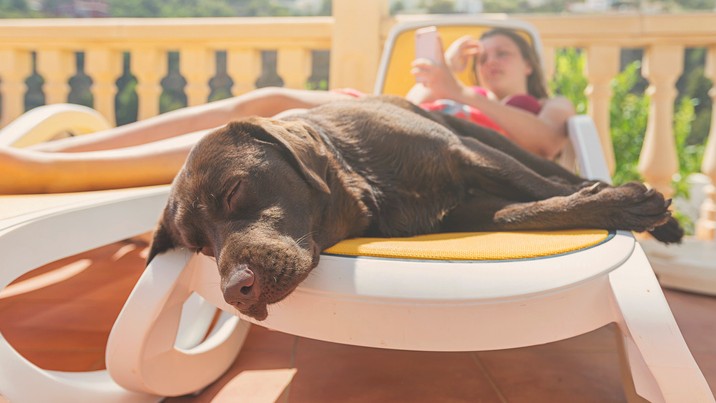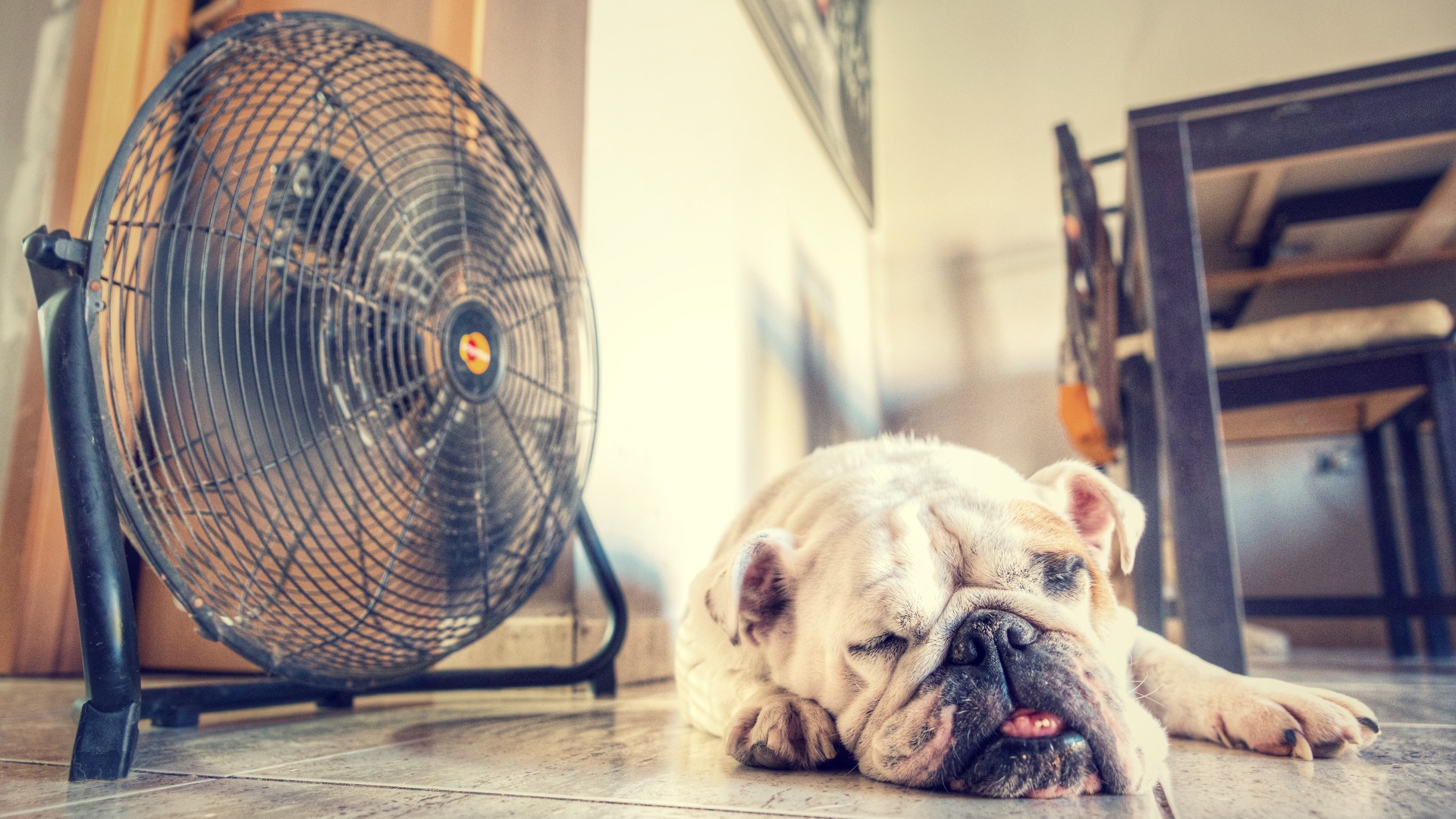How to cool down a dog: A vet's guide
You need to know how to cool a dog if your pet is panting or acting strangely in the heat.

Hot dogs are not cool! In fact, if a dog is overheating then you could have a serious situation on your hands because it means that your pet is becoming less able to cool itself. The longer the situation persists, the more dangerous things become. At this stage, it's vital that you cool the dog as quickly as you can.
There are various signs to watch out for. Overheating dogs will pant in order to cool themselves. Their gums may go bright red or blue and they begin to vomit or have diarrhea. Too much heat can be disorientating so you may find your dog displays odd behavior such as being unable to stand or walking in circles. In some cases, a dog may collapse. But you don't want to get your pet to this stage!
In this guide, we look specifically at how to cool down a dog but you should also look to prevent overheating. An easy way is to be aware of situations which can cause problems such as keeping dogs in hot cars – one of the biggest no-nos of all because the vehicle's interior becomes like an oven even in the shade with the windows open.
According to researchers at Nottingham Trent University, exercise is also the most common trigger of heat-related illness and you need to take extra care during July and August which is when scientists found heat-related incidences rise the most. The idea then is to take preventative measures and to know what to do in case of an emergency. Never be afraid to seek the advice of a veterinarian either if you're worried.
The signs of heatstroke in dogs
If you’re going to cool your pet down effectively, you first need to know what the early signs of heatstroke are, as well as when and how to intervene. The early, mild signs of heatstroke include:
- Panting
- Breathing changes
- Labored breathing
- Lethargy
- Tiredness
- Changes in behavior
Treating during these early stages gives your dog a 98% chance of survival. However, without treatment, the signs can progress to:
- Dark red tongue or gums
- Confusion
- Unsteadiness
- Collapse
- Diarrhoea
- Vomiting
- Seizures
- Coma
- Death
Once your dog progresses into these more serious signs, the chance of survival is less than 50%, meaning early recognition really is key. Once you’ve spotted the signs, you’ll need to know how best to cool a dog down.
How to cool down a dog that is overheating
If you suspect your dog is overheating, the best thing you can do is get him to a veterinarian as soon as possible. However, there are some things you can do at home and on the way to the vet that may help.
Dogs cannot sweat, but evaporation is still effective at cooling them down. Therefore, getting their fur wet and then providing plenty of airflow to encourage evaporation of the water is one of the best ways you can cool them down.
DO
- Use a hose, wet towel, or cups of lukewarm water to wet your dog’s fur
- Place in front of a fan, or in the car with the air con on
- Offer them a drink of water
DON'T
- Leave wet towels over your dog – like a wetsuit they’ll start to trap in heat, airflow is key!
- Waste time waiting for your dog to drink if they aren’t interested
- Delay getting them to the vet
How to cool down a dog fast – should I use ice water?
The quickest way to cool a dog down is by encouraging evaporation. Whilst it might seem that cold water is best, it’s important that you don’t shock your dog by throwing him into cold water. You can also take the cooling too far – you don’t want your dog to get hypothermia! That’s why it’s best to start the cooling and leave it to the vet to determine the best time to stop.
How to cool down a dog at night

If you have a dog that seems to be struggling with the heat, you might be thinking that night is a more comfortable time for them. But whilst night time is naturally cooler than day, dogs can have just as much trouble sleeping if they’re too warm as humans do.
You might find your dog is more comfortable downstairs, or on a hard surface. They may also appreciate a cooling mat to lie on, as this will help them dissipate heat more easily. Don’t forget to ensure you have plenty of water available for them to drink. In some situations, your dog might be cooler with a fan on all night. This, of course, depends on where your dog sleeps and how they feel about the fan but is worth considering.
Of course, there are other causes for panting and restlessness at night other than heat – make sure you get your dog a check-up if it continues!
Preventing heatstroke in dogs
Of course, if you can stop your dog from getting heatstroke in the first place that’s by far the safest option. Make sure your dog has access to shade and fresh water at all times – like with children, you may have to force them into the shade if they’re a sun-lover! Since exercise is the biggest cause of heatstroke, think carefully about the temperature when you walk your dog. It’s ok to miss a dog walk if the weather is too hot or consider a swim or a shady woodland walk in the morning before it gets too warm.
It’s best to prevent your dog from overheating in the first place, but in an emergency, knowing how to cool down a dog is important. The best thing you can do for your dog is get them wet, then get them in the car to the vets. With early treatment of mild signs, your dog’s prognosis is excellent, but they can quickly go downhill if you delay getting them to the vet.
You might also want to read: How much water should my dog drink?
PetsRadar Newsletter
Get the best advice, tips and top tech for your beloved Pets
After graduating as a vet from the University of Nottingham, Dr Joanna Woodnutt went on to practice companion animal medicine in the Midlands. Since then, she has also written for countless online and print publications and is a regular contributor for Edition Dog Magazine.
- David CrookesFreelance writer

